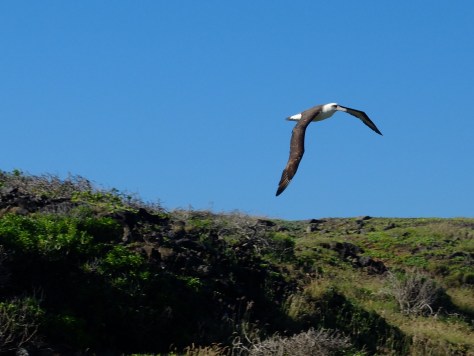 In June, people are still at work in Stockholm, anticipating the upcoming Midsommar holidays and then July, when basically everything shuts down. I took my bicycle and rode around the city, enjoying the views and sunny warm weather. I notice men wearing blue suits with light blue shirts and brown shoes, and plenty of students wearing their white graduation caps, shouting and singing during their graduation parties. Some of them have rented party buses to drive around the city. Other are just in their cars expressing their new freedom from school. I already managed to join friends for a few parties of celebration. In the few warm months, every moment is full, and a whole year of festivities is compacted into these night-less days. For me, it is already summer, and I have begun my yearly sojourn to the northern countries of Sweden and Lithuania. Then I will soon enough be in Africa to continue the research project in Cameroon.
In June, people are still at work in Stockholm, anticipating the upcoming Midsommar holidays and then July, when basically everything shuts down. I took my bicycle and rode around the city, enjoying the views and sunny warm weather. I notice men wearing blue suits with light blue shirts and brown shoes, and plenty of students wearing their white graduation caps, shouting and singing during their graduation parties. Some of them have rented party buses to drive around the city. Other are just in their cars expressing their new freedom from school. I already managed to join friends for a few parties of celebration. In the few warm months, every moment is full, and a whole year of festivities is compacted into these night-less days. For me, it is already summer, and I have begun my yearly sojourn to the northern countries of Sweden and Lithuania. Then I will soon enough be in Africa to continue the research project in Cameroon.

San Francisco in the spring was full of flowers and unusual green grass on the city hills, after all the rains. Then suddenly, I am on a plane, first to Minneapolis, then Frankfurt, then Vilnius, and finally Stockholm. This time the planet seemed huge, given the number of hours of flight. The airplanes are all full, very unlike the days that I remember as a child. I remember flying on Pan Am around the world in half empty airplanes. It seemed that there was always an extra seat or row to sleep in. What will it be like in 20 years? If it continues like this, we will be strapped in while standing up, to save space. Or perhaps there will no longer be a need to travel whatsoever, because of virtual reality. And in any case, the whole world will be rather homogeneous anyway, given the obvious entropy that is causing each city to be alike any other. Stockholm now seems to have a diversity of people that is similar to London, Frankfurt or New York. I like that I can’t recognize the languages people are speaking in the trains and I love hearing the different accents when people speak Swedish. This is a country going through major changes, and for the most part, it seems to be going well. Watching the television and listening to the radio, it is noticeable they have news in several languages, including sign language. In direct contrast to the USA, here there is an emphasis on being welcoming and inclusive of all people. I use my Swedish passport nearly exclusively these days.
The traffic through the center of Stockholm City is bad these days because of the reconstruction going on. It seems constant, and Swedes tolerate the incessant building of new parts of the city. There are always new subway lines to consecrate and new more efficient buildings coming up. Practical and forward thinking, but rich in traditions, this is Stockholm.


























































































































































































































